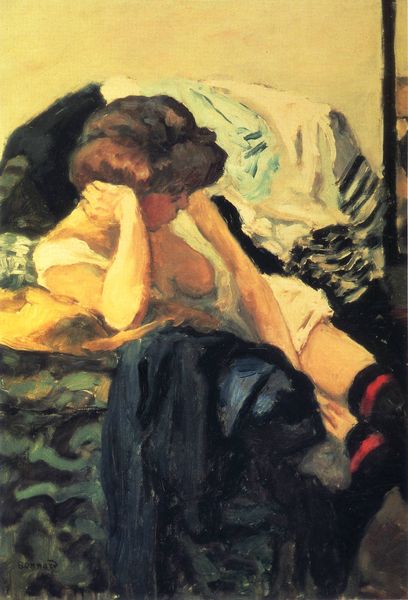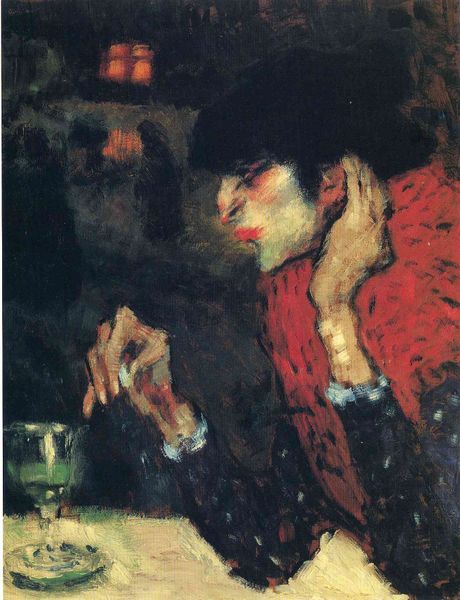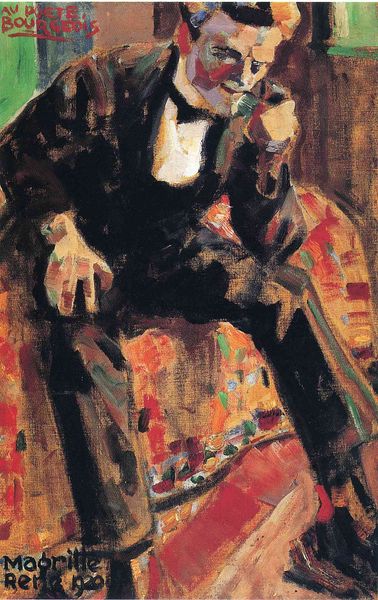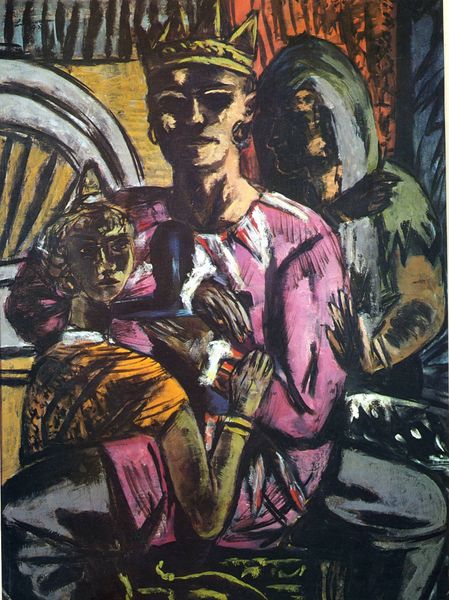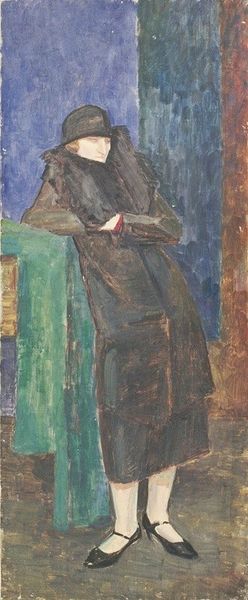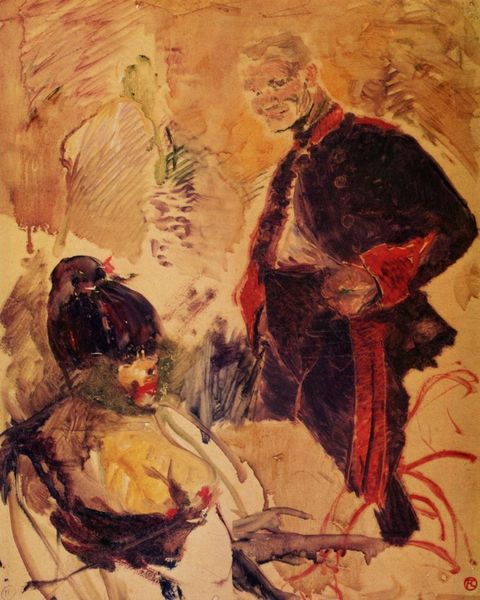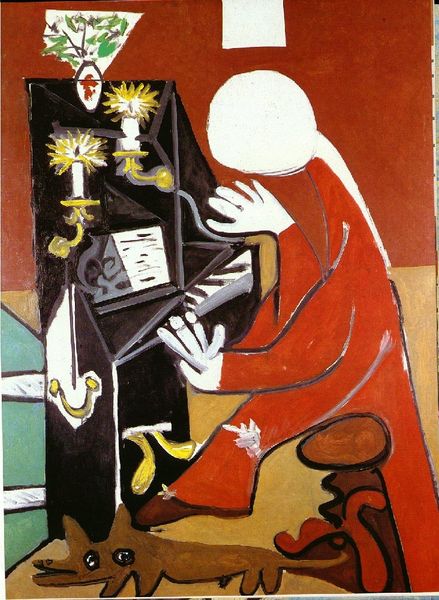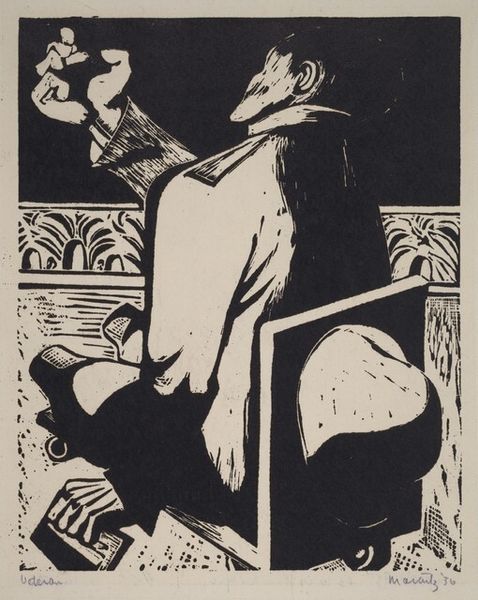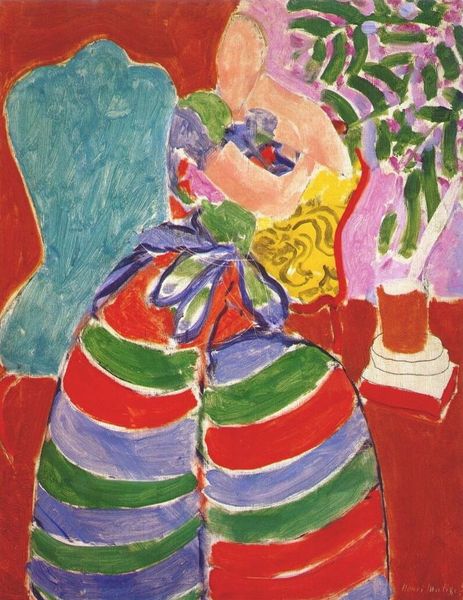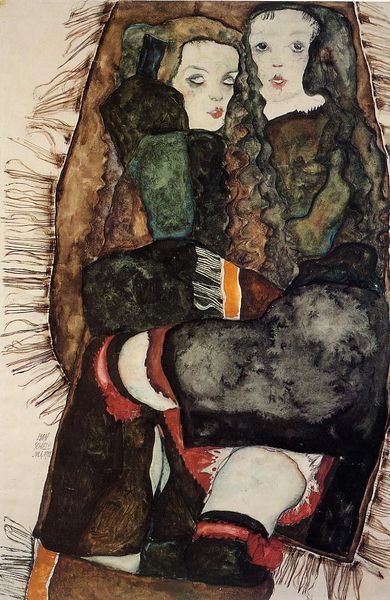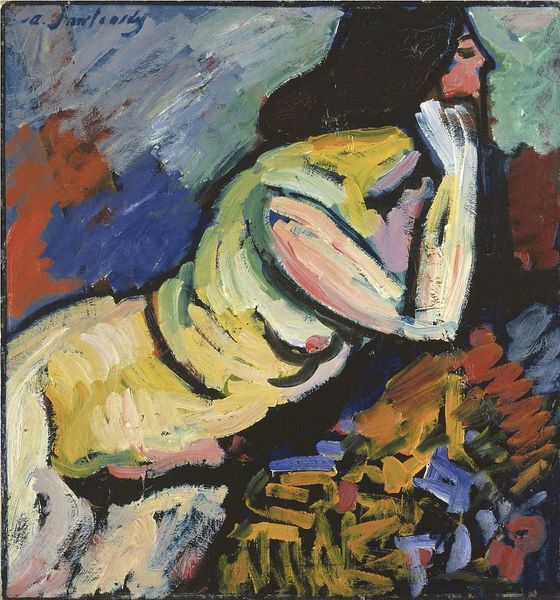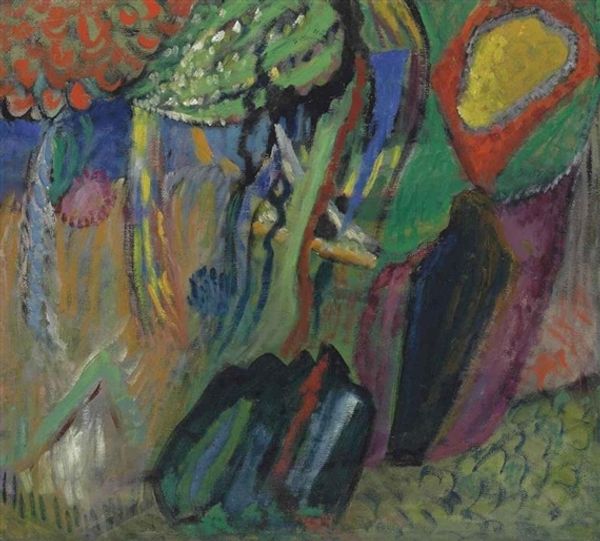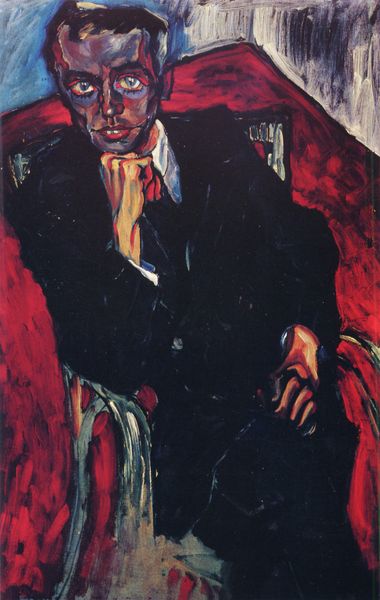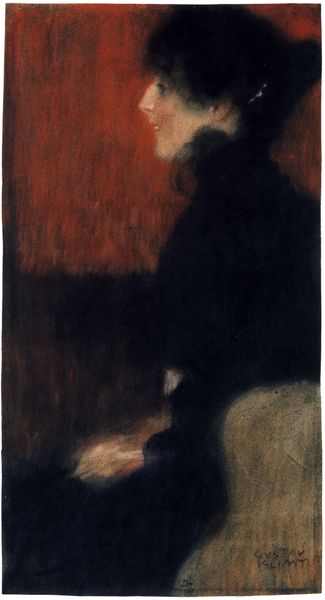
painting, oil-paint
#
cubism
#
non-objective-art
#
painting
#
oil-paint
#
oil painting
#
geometric
#
expressionism
#
painting art
#
expressionist
Copyright: Public domain US
Curator: Well, I am immediately drawn in by the bold color choices. There's something almost unsettling, yet compelling, in how those purples and yellows clash against the stark black. Editor: You've hit upon an important tension. We are looking at Nathan Altman’s “Still Life with Blue Slippers,” painted in 1911. The application of oil paint and the fragmented, geometric forms, put this squarely within an expressionistic, perhaps even early Cubist framework. Curator: The geometric shapes don’t completely disguise the mundane nature of the subject though, do they? Slippers, of all things! Such everyday objects given almost… monumental treatment. Editor: Exactly. And considering the socio-political backdrop of the early 20th century, this isn't just a depiction of domesticity. Expressionism, especially in Altman’s context, engaged with a rapidly changing world. The broken forms can suggest a society fractured by modernization and pre-war anxieties. Curator: That resonates strongly with me. Those ‘slippers,’ somewhat ironically, don't suggest rest or domestic comfort at all. They seem to carry a much heavier, symbolic weight – perhaps a feeling of displacement. Even their blueness strikes me as rather melancholic rather than soothing. What might blue slippers symbolize for audiences in that time, perhaps anxieties surrounding women's roles or impending war? Editor: We must be careful not to assume a single meaning, however. The beauty of a work like this is how it keeps open multiple interpretations. In that period, the influx of mass-produced objects, thanks to burgeoning industrialization, influenced the way objects themselves carried symbolic power. "Still Life" thus can comment on a shift in how value systems and commodity culture functioned then. The work now hangs as much in our cultural memory as it exists here on this wall, challenging current institutions and conventions. Curator: A society struggling with its identity perhaps reflected in a deconstructed tableau of ordinary life? The domestic made dissonant, if you will. Well, I for one am left pondering those unconventional slippers, and the path they may represent in a very turbulent historical context. Editor: Indeed. This "still life," captured in that single moment in 1911, reminds us that art's significance is ever-shifting and reflective of society's evolution.
Comments
No comments
Be the first to comment and join the conversation on the ultimate creative platform.
